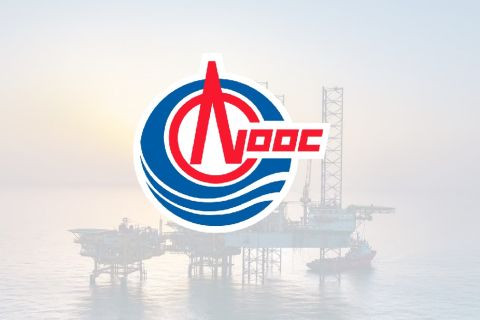MIDLAND, Texas—The Permian Basin is seeing a wave of consolidation as operators scour the basin for quality drilling inventory. But most of that top-tier inventory is already in the clutches of a relatively small batch of E&Ps.
Upstream investors are prioritizing shareholder returns over production growth or nearly any other metric right now. With elevated commodity prices in the past year, upstream E&Ps have been able to return huge buckets of cash to investors through share buybacks and various dividends.

But lower oil and gas prices, and a lower quality of remaining drilling inventory for several Permian E&Ps, have started to rattle the free cash flow-driven shareholder return frameworks operators have leaned on for the past year or so.
Upstream operating cash flow has generally been declining over the past few quarters, said Ryan Duman, director of U.S. Upstream Research for Wood Mackenzie, during Hart Energy’s Executive Oil Conference and Exhibition. At the same time, inflation in services costs is driving capex up.
“What you’ve seen with these trends is there’s been more pressure and less free cash flow for operators to deliver on those very valuable shareholder distributions,” Duman said.
During the second quarter, companies actually had to start tapping their balance sheets in order to deliver on shareholder return promises for the first time since the COVID-19 downturn.
Recent lifts in commodity prices helped boost free cash flow generation in the third quarter, per WoodMac research.
But as E&Ps drill through their top acreage and move into deeper and less economic Tier 2 and Tier 3 benches, long-term free cash flow generation will start to become a bigger problem, Duman said.
Those fears have driven a wave of deals aimed at deepening quality drilling runway in the Permian Basin.
“One of the ways companies can stabilize these trends, if not improve them, is through M&A and refreshing some of that Tier 1 inventory,” Duman said. “We’re certainly seeing that through deals.”
RELATED: CEO: Vital Energy Sees ‘A Lot More Opportunity’ for Permian M&A
The Permian premium
Companies might have a desire to get deeper in the Permian right now. But they’re going to need to pay a pretty penny to do so.
Consolidation in the Permian Basin isn’t a new story by any means. What is relatively new is how consolidated the core-of-the-core Permian inventory really is right now, Duman said.
Approximately 80% of the remaining Tier 1 drilling locations in the entire Permian Basin—throughout all benches of the Midland and Delaware basins—are held by a small number of companies with a market cap of more than $30 billion.
“This is going to be extremely challenging, if not just extremely expensive, for companies looking to acquire any sort of significant number of locations going forward,” Duman said.
WoodMac generally defines a Tier 1 location as a well that can generate at least a 30% return at a $50/bbl WTI price.
To acquire anywhere between 500 Tier 1 and 1,000 Tier 1 drilling locations in the Permian, expect a price tag of between $3 billion and $10 billion, Duman said.
Over time, there will be fewer and fewer deals that companies, outside of the Exxons or Chevrons of the world, will be able to make.
“We’re going to see more and more Permian Tier 1 inventory decline and just not be available,” Duman said. “So, what are these companies going to do?”
One of the options is making Tier 2 locations generate returns like Tier 1 locations. That’s happening in the Bakken where modern completion techniques are being applied to legacy wells to boost productivity.
In order to achieve Tier 1 results from Tier 2 quality inventory, operators would need to see a roughly 30% decrease in total drilling and completion costs.
“With most companies comfortably having about a decade at least worth of inventory, this doesn't have to be imminent that companies target this either,” he said. “Do you think over the next five years we could reduce costs by about 30%? I think that’s certainly plausible.”
And companies are even considering shale patches outside of the Lower 48. WoodMac has started getting questions about E&Ps moving into the Montney Shale in Alberta, or the Vaca Muerta Formation in Argentina.
RELATED: Permian Resources Finds ‘Unique Value Prop’ in Small-ball M&A
Recommended Reading
Encino’s Tim Parker: Plenty of Utica Oil—and Takeaway Too
2024-11-15 - Encino Energy's Tim Parker tells Hart Energy's Nissa Darbonne about the economics of drilling in the company's Utica oil development at the DUG Appalachia Conference and Expo.
Baker Hughes Defies Nature with an Upgrade to Ol’ Fashioned Cement
2024-10-15 - Baker Hughes’ InvictaSet uses regenerative capabilities to provide operators with a sustainable cement solution that can last for years.
Exxon Plans Longest 20,000-Ft Wells on Pioneer’s Midland Asset
2024-11-04 - Exxon Mobil has already drilled some of the longest wells in the New Mexico Delaware Basin. Now, the Texas-based supermajor looks to go longer on Pioneer’s Midland Basin asset.
E&P Highlights: Sept. 23, 2024
2024-09-23 - Here's a roundup of the latest E&P headlines, including Turkey receiving its first floating LNG platform and a partnership between SLB and Aramco.
CNOOC Makes Ultra-deepwater Discovery in the Pearl River Mouth Basin
2024-09-11 - CNOOC drilled a natural gas well in the ultra-deepwater area of the Liwan 4-1 structure in the Pearl River Mouth Basin. The well marks the first major breakthrough in China’s ultra-deepwater carbonate exploration.
Comments
Add new comment
This conversation is moderated according to Hart Energy community rules. Please read the rules before joining the discussion. If you’re experiencing any technical problems, please contact our customer care team.






